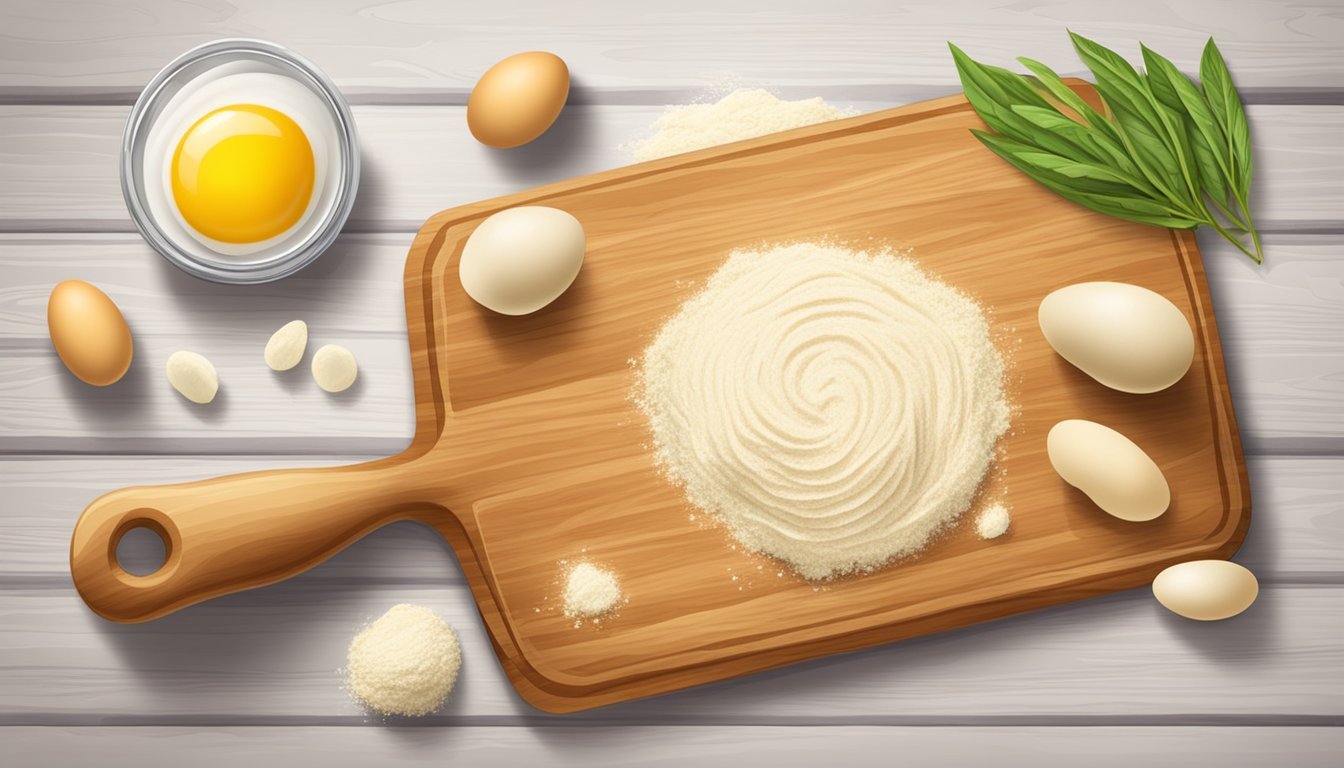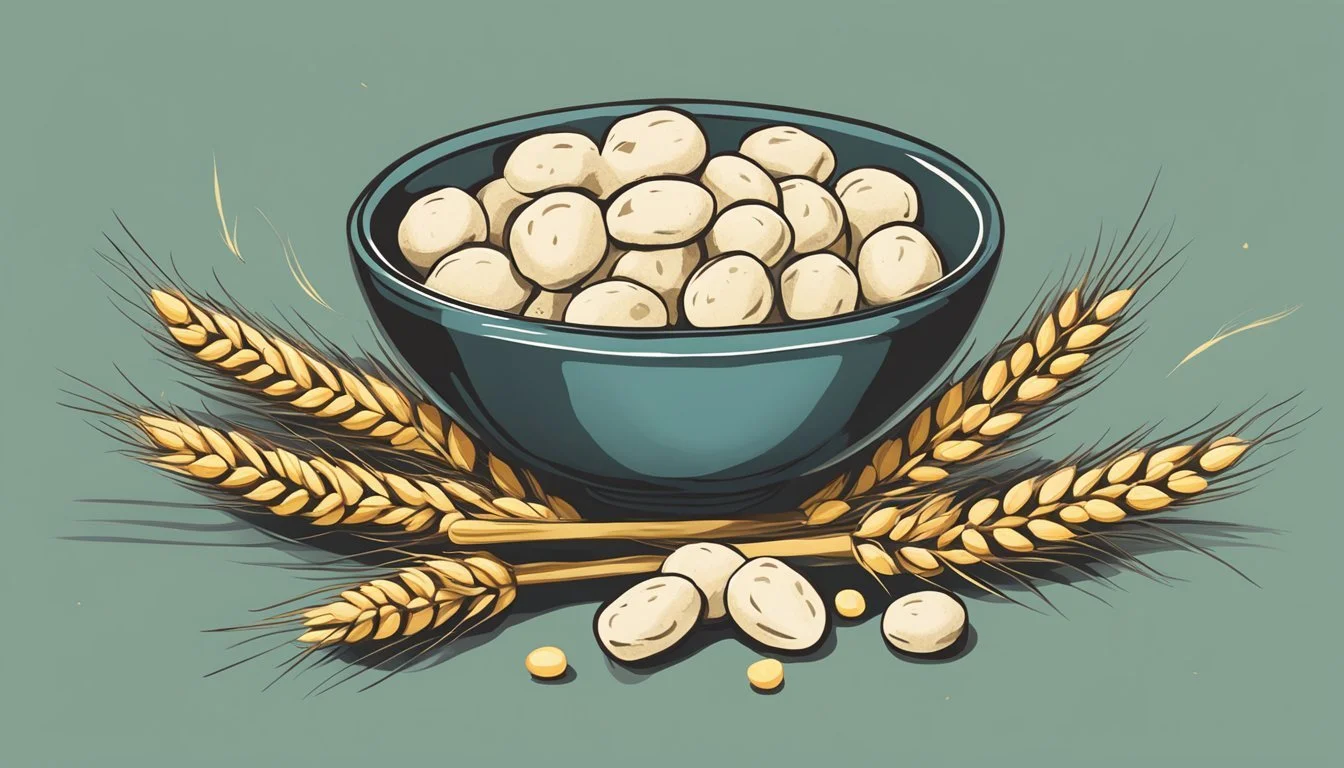Is Gnocchi Gluten-Free?
Unveiling the Ingredients and Varieties
Gnocchi, a traditional Italian dumpling, commonly contains wheat flour as a binding agent, which means that conventional gnocchi recipes are not suitable for those adhering to a gluten-free diet. However, the increasing demand for gluten-free options has led to the creation of gluten-free gnocchi, allowing individuals who avoid gluten to enjoy this classic dish. These gluten-free variations often utilize alternative flour blends or starchy ingredients like potatoes (What wine goes well with potatoes?) to mimic the texture and flavor of regular gnocchi.
The primary ingredient in gnocchi is potatoes, which possess the desirable qualities of being flavorful, starchy, and naturally gluten-free. Gluten-free gnocchi recipes capitalize on these attributes, and some might even exclusively use potatoes with a gluten-free flour substitute to maintain the traditional gnocchi consistency. The preparation of gluten-free gnocchi follows a similar process to the traditional method, which involves creating a dough, rolling it into ropes, cutting it into small pieces, and then giving them the distinctive ridges.
It is essential to ensure that all ingredients used, including the flour substitute, are certified gluten-free to prevent cross-contamination. Gluten-free gnocchi can be made fresh and enjoyed immediately, or they can be frozen and cooked straight from the freezer, providing a convenient option that maintains the quality and texture of the dumplings. With careful ingredient selection and preparation, gluten-free gnocchi can be a delicious and satisfying alternative for those with celiac disease, gluten intolerance, or anyone choosing to follow a gluten-free lifestyle.
What Is Gnocchi?
Gnocchi are a type of Italian dumpling known for their soft texture and variety of ingredients. Commonly associated with traditional Italian cuisine, they offer a versatile base for a plethora of dishes.
Historical Background
The origins of gnocchi can be traced back to Italy, where they have been a staple in the culinary culture for centuries. They are believed to have been introduced to Europe by Roman legions during the expansion of the empire. As a humble dish with simple ingredients, they have fed populations through various periods of history.
Gnocchi Ingredients
Traditional gnocchi are primarily made with potato, creating a soft and fluffy texture, and flour to bind the dough. The classic gnocchi recipe typically includes:
Cooked, mashed potatoes
Flour (often wheat-based)
Salt, and sometimes eggs for binding
However, with dietary needs evolving, many brands now offer gluten-free gnocchi, utilizing alternative flours such as rice, corn, or potato starch to accommodate those with gluten sensitivities.
Understanding Gluten
In approaching the topic of gluten-free diets and foods, it's essential to have a firm grasp on what gluten is and its implications for certain health conditions, as well as its presence in various grains.
Gluten and Celiac Disease
Gluten is a group of proteins found predominantly in wheat, rye, and barley, which gives elasticity to dough, helping it to rise and keep its shape. For individuals with celiac disease, ingesting gluten triggers an immune response that damages the lining of the small intestine. This can inhibit the absorption of nutrients from food, potentially leading to nutritional deficiencies and other health issues. A gluten-free diet is the only effective treatment for managing celiac disease.
Gluten in Grains
Although wheat flour is a staple in many diets, it's also the primary source of gluten. Here's a brief overview of gluten content in common grains:
Contains Gluten: Wheat (all varieties, including spelt, kamut, farro, and durum), rye, barley, triticale.
Naturally Gluten-Free: Rice, corn, quinoa, millet, oats (although cross-contamination can be an issue unless they are certified gluten-free), sorghum, teff, amaranth, buckwheat.
Understanding which grains contain gluten aids in making informed dietary choices, particularly for those requiring a gluten-free diet for health reasons.
Making Gluten-Free Gnocchi
Creating gluten-free gnocchi involves selecting appropriate gluten-free ingredients, following a specific recipe to prepare the dough, and understanding the techniques of shaping and cooking this Italian delicacy to ensure the perfect texture and taste.
Choosing the Right Ingredients
One must choose ingredients that will mimic the traditional potato gnocchi texture while adhering to a gluten-free diet. A combination of rice flour, tapioca flour, and a binding agent like xanthan gum often replaces the standard wheat flour. One should opt for starchy potatoes, such as Russets, that have been baked to maintain a dry, fluffy consistency. The addition of an egg and a pinch of salt enhances the dough's structure and flavor.
Essential Gluten-Free Gnocchi Ingredients:
Potatoes: Starchy variety like Russets, baked and cooled
Gluten-Free Flour: A mix of rice flour and tapioca flour
Xanthan Gum: Small amount for binding
Egg: Acts as a binder
Salt: For taste
Steps to Prepare Gluten-Free Dough
To start, begin by ricing the cooled, baked potatoes with a potato ricer or mashing them thoroughly with a potato masher for a fine, lump-free texture. In a separate bowl, mix rice flour, tapioca flour, and xanthan gum. Introduce the dry mixture to the potatoes alongside an egg and salt. They should knead the mixture until a cohesive dough forms, but be cautious not to over-knead, as this makes the gnocchi dense.
Bake and cool potatoes.
Combine with flour mixture, egg, and salt.
Knead until dough is formed (avoid over-kneading).
Shaping and Cooking Gnocchi
After preparation, they divide the dough into manageable pieces. Roll each piece into a long rope and cut the ropes into bite-sized pieces with a sharp knife. To give the gnocchi its characteristic ridges, press each piece against the back of a fork and gently roll it. Once shaped, the gnocchi can either be cooked immediately in boiling salted water until they float to the surface or frozen on a baking sheet before storing in a freezer bag for later use.
Divide the dough into sections.
Shape each piece on a fork for ridges.
Boil until they float or freeze for later use.
Gluten-Free Gnocchi Variations
Gluten-free gnocchi offers an array of variations that cater to different dietary needs, utilizing a variety of alternative flours and starches. These adaptations not only make gnocchi accessible to those with gluten sensitivities but can also introduce new flavors and textures to the classic dish.
Alternative Flours and Starches
The traditional wheat flour in gnocchi is replaced by gluten-free alternatives to create a safe option for those with gluten intolerances or celiac disease. Commonly used gluten-free flours include:
Rice Flour: Often used as a base for gluten-free flour blends, it gives gnocchi a light and tender texture.
Maize Flour: Provides a subtle corn flavor and a sturdy structure when combined with other gluten-free flours.
Tapioca Flour: Enhances the chewiness and helps bind the dough.
Potato Starch: Derived from potatoes, it lends a soft texture that closely mimics traditional gnocchi.
Maize Starch: Similar to cornstarch, it's incorporated for its thickening properties.
A mixture of these flours, alongside potato flakes or starch, creates a balanced flour blend that mimics the taste and texture of classic gnocchi.
Vegan and Dairy-Free Options
For individuals following a vegan or dairy-free diet, gluten-free gnocchi can be made without common animal-derived ingredients. Here are some variations:
Sweet Potato Gnocchi: Incorporates roasted sweet potato, providing a naturally sweet flavor and rich, moist texture while adhering to gluten-free and vegan diets.
Dairy-Free Gnocchi: Avoids the use of cheese or butter, substituting with plant-based alternatives or simply omitting these ingredients to maintain the integrity of the dish.
By focusing on plant-based ingredients and gluten-free flours, these gnocchi variations ensure that individuals with various dietary restrictions can enjoy this traditional Italian favorite.
Pairing and Serving Suggestions
When it comes to adequately serving gnocchi, the choice of sauce and side dishes plays a pivotal role in creating a delightful meal. The right combinations can transform gnocchi into a memorable dish, enhancing its subtle flavor and complementing its tender texture.
Selecting Sauces
The sauce selection is crucial for complementing gnocchi. A velvety sage and butter sauce is a classic choice that offers a luscious finish to the delicate gnocchi. For those who prefer zestier flavors, a tomato-based sauce, like marinara, adds a tangy contrast. Gnocchi also pairs beautifully with pesto, whether it's traditional basil or other variations like arugula or sun-dried tomato pesto. As for creamy sauces (What wine goes well with creamy sauces?), a rich Alfredo can prove to be a sumptuous option.
Sauce Type Description Sage Butter A rich, herb-infused butter sauce highlighting sage's aromatic qualities. Tomato From a tangy marinara to a robust tomato sauce, this variety introduces a bright, acidic dimension. Pesto Nutty and herby, pesto can be made from basil or alternative greens for a fresh taste. Alfredo Creamy and cheese-focused, Alfredo sauce offers a decadent, smooth texture.
Side Dishes
The sides served with gnocchi should harmonize with the main dish while providing complementary textures and flavors. Simple vegetables tossed in olive oil with a sprinkle of salt and pepper, such as roasted Brussels sprouts or sautéed spinach, work well. For a crunchier counterpart, a fresh salad with a light vinaigrette can serve as an excellent palate cleanser. Considering that gnocchi can be rich, lighter sides can balance the meal effectively.
Vegetable Sides:
Roasted Brussels sprouts with grated Parmesan
Sautéed spinach with garlic
Grilled asparagus with lemon zest
Salads:
Arugula salad with a balsamic vinaigrette and shaved Parmesan
Caprese salad with fresh mozzarella, tomatoes, and basil drizzled with olive oil
The choice of sauces and sides should respect the gluten-free nature of the gnocchi if it is a dietary requirement.
Storage and Reheating Tips
Gnocchi's shelf life and optimal texture depend on proper storage and reheating methods. By following these guidelines, one can ensure the gnocchi remains fresh and retains its desired consistency when ready to serve.
Freezing and Thawing
Freezing:
To freeze gnocchi, spread them out on a baking sheet in a single layer.
Allow them to freeze until firm, which typically takes about three hours.
Once firm, transfer the gnocchi into a resealable freezer bag or an airtight container.
Thawing:
There is no need to thaw frozen gnocchi before cooking.
Instead, one can reheat them directly from the freezer by boiling or another preferred method, which helps preserve their texture.
Refrigeration and Shelf Life
Refrigeration:
Fresh gnocchi should be stored in the refrigerator if they are to be consumed shortly after preparation.
In the fridge, gnocchi can stay fresh for a couple of days when kept in an airtight container.
Shelf Life:
In the freezer, gnocchi can maintain their quality for up to 2 months.
The refrigerator shelf life is significantly shorter, so for extended preservation, freezing is the recommended method.
Nutritional Information
When considering gnocchi's nutritional profile, particularly with the emphasis on gluten-free options, it's vital to understand its calorie content and dietary implications to make informed dietary choices.
Calorie Content
A 2-ounce serving of regular pasta typically contains about 211 calories, whereas the same serving size of gnocchi may have approximately 89 calories, though the actual serving size of gnocchi is often larger. For those mindful of calorie intake, gnocchi can be a lighter alternative, with gluten-free versions potentially differing slightly in calorie count due to the alternative flours used.
Dietary Considerations
Gluten-free gnocchi is tailored for those with celiac disease or gluten sensitivity. They must avoid gluten, a protein found in wheat, barley, and rye. Gluten-free gnocchi substitutes common wheat flour with gluten-free flours like rice flour or potato starch. Beyond the absence of gluten, one should also consider the nutrients provided in a serving of gnocchi. While it may offer some protein — approximately 2.5 grams per 2-ounce serving — it's relatively low in vitamins and minerals such as iron, with about 0.5 mg of iron present in the gluten-free variety. Those on a gluten-free diet should look to other foods to fulfill their overall nutritional needs.






